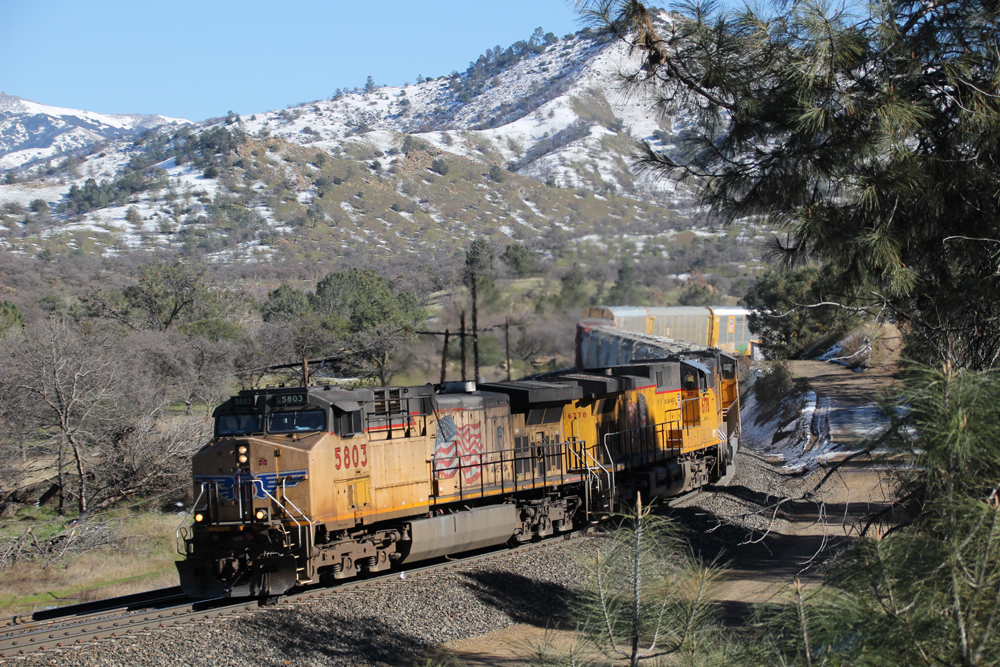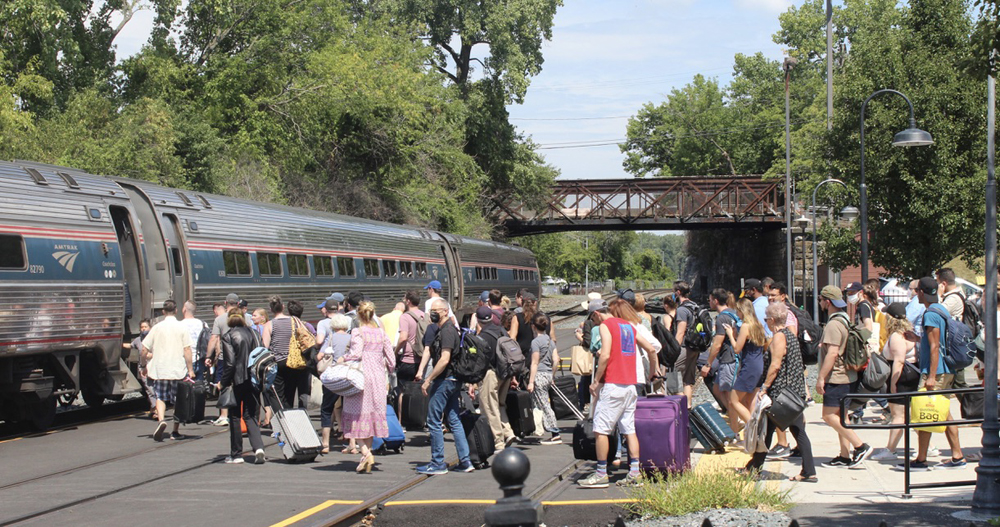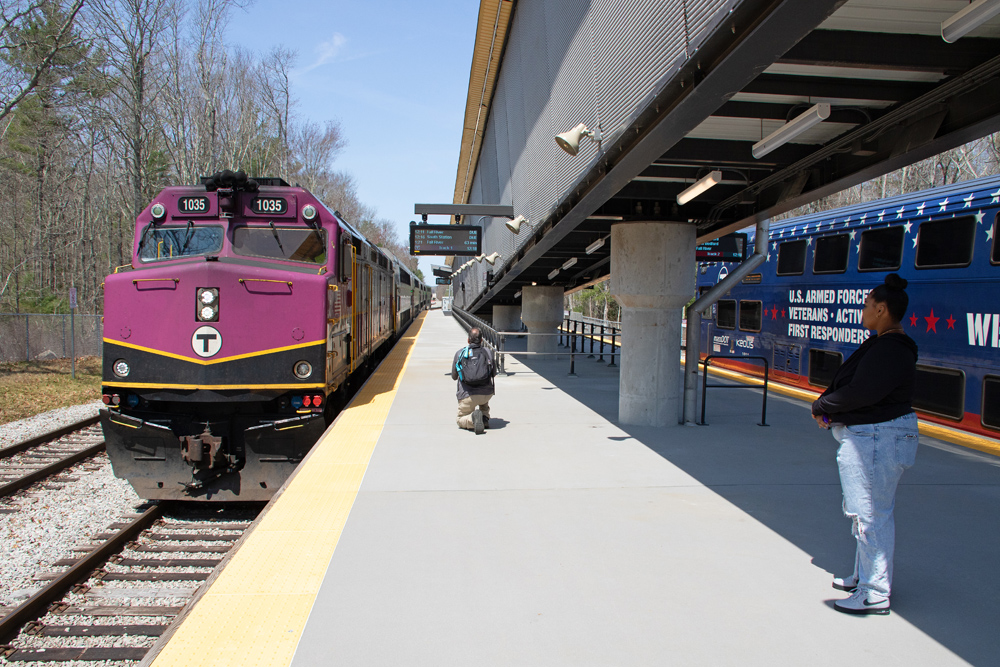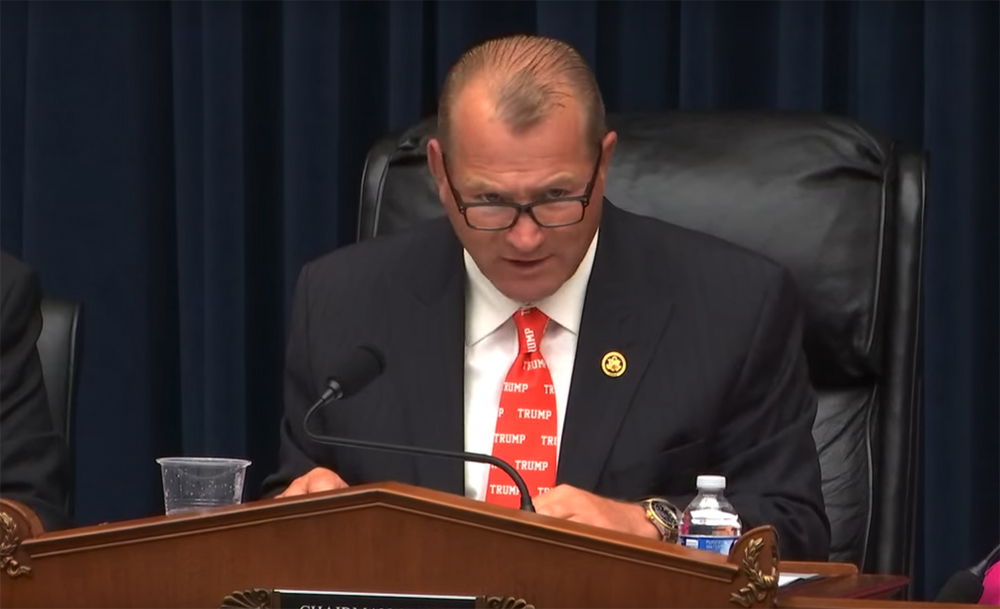
WASHINGTON — Legislators used a House subcommittee hearing on railroad safety today (Tuesday, July 23) to highlight a new rail safety bill, while committee members and witnesses including regulators, union representatives, and the House member representing East Palestine questioned the rail industry’s own safety efforts.
The revised bill, the Railroad Safety Enhancement Act (H.R. 8996), was introduced July 11, according to the House website, although the full text was only made available today. It is sponsored by U.S. Reps. Troy Nehls (R-Texas), the chair of the Railroads, Pipelines, and Hazardous Materials Subcommittee, which held Tuesday’s hearing, and Seth Moulton (D-Mass.). In his prepared hearing remarks, Nehls highlighted four additions to the Railway Safety Act introduced in the Senate last year. That bill eventually passed the Commerce Committee in modified form [see “Railway Safety Act advances …,” Trains News Wire, May 10, 2023] but has gone no further.
— It would require all Class I railroads to join the Federal Railroad Administration’s Confidential Close Call Reporting System for two years.
— It requires states to notify first responders of the AskRail app, which provides information about train consists, and would create a pilot program to address connectivity problems for the app along the rail network.
— It would authorize an additional $1 billion for the Railroad Grade Crossing Elimination Program.
— It authorizes $100 million annually for a FRA grant program to install railcar telematics systems and gateway devices on cars carrying hazardous materials.
Nehls pointed out during Tuesday’s hearing that the bill retains the two-person crew requirement, an aspect highlighted when the Teamsters Union announced its support for the bill this evening. A press release said the legislation “includes several Teamsters priorities, such as requiring a qualified engineer and conductor on most freight trains and providing essential equipment to roadway workers to ensure protections from being struck by trains and other railroad vehicles while working on track.”
The Senate version of the safety bill has languished because of Republican opposition to some provisions — the two-person crew requirement among them — but Nehls made his pitch to overcome similar resistance in the House.
“I am going to speak directly to my Republican colleagues on the committee,” he said. “The Railway Safety Act in the Senate is supported by President Trump and is authored by Vice Presidential nominee Senator Vance. … Taking Senator Vance’s bill and adding these four safety provisions makes this a very good rail safety bill and I humbly ask for your support because it’s the right thing to do.”
Moulton, in a press release, called the bill “a true bipartisan and bicameral effort.
“Freight rail is the most efficient and safest way to transport goods across our country, and it provides over 160,000 American jobs, but these improvements are overdue. This bill would ensure that this $80 billion industry operates more safely and efficiently for years to come.”
Testimony questions industry efforts
Meanwhile, those testifying at the hearing highlighted areas where they see safety efforts falling short.
FRA administrator Amit Bose said the safety performance of Class I railroads “has stagnated over the last decade — and by some measures deteriorated. Despite assertions to the contrary, derailment rates for our nation’s largest rail companies have not significantly improved.” He also said the FRA had introduced five regulations under the current administration to address safety — including rules on dispatcher and signal employee training, fatigue risk management programs, and emergency breathing apparatus on trains carrying hazardous materials. “And yet in every instance except one, the railroad industry has either sued to block them or filed petitions for reconsideration.”
Jennifer Homendy, chair of the National Transportation Safety Board, testified that there are 215 open rail safety recommendations, and 116 recommendations to the FRA closed with unacceptable action. “The collisions and derailments we see in our investigations are tragic because they are preventable,” she said in her prepared remarks, “and we believe the safety issues we identify in these investigations should be acted on swiftly.”
The two union representatives taking part — David Arouca of the Transportation Communications Union, and Gregory Hynes of SMART-TD — both focused on what they say are the railroads’ financial focus at the expense of safety.
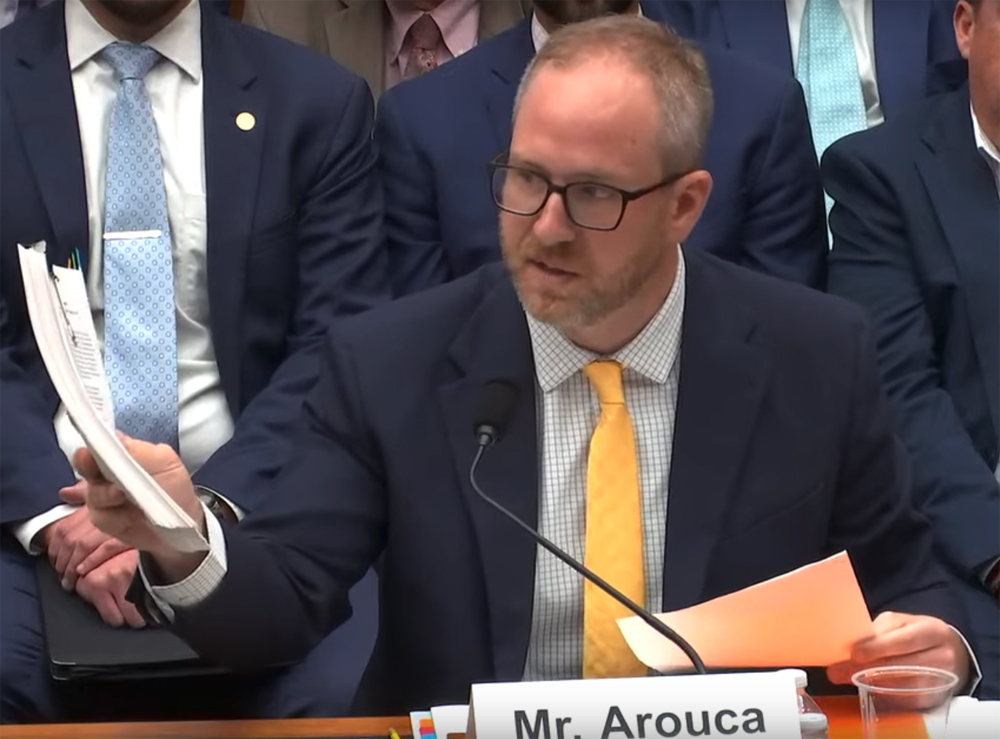
Arouca specifically focused on the work of his union’s Brotherhood of Railway Carmen Division, which conducts railcar inspection and maintenance, saying the carmen are not given sufficient time to conduct inspections. “The railroads do not want to know how defective their trains are,” he said in written testimony. “Indeed, the prevailing mindset of the Class Is in the current era can be summed up in the common refrain that our members hear every single day from management: ‘We’re in the business of moving freight, not fixing railcars.’” In response to a question, Arouca said that, when FRA inspectors are not on hand, carmen are given an average of 44 seconds — 22 seconds per car side — to conduct inspections: “You can barely physically walk the length of a train car in 22 seconds, let alone pay any attention to any amount of detail on the car.”
Hynes, in his written testimony, said Precision Scheduled Railroading and pursuit of the lowest possible operating ratio make “quarterly profits … the most essential goal over anything else, including safety” and that without legislation, “business will continue as usual in the industry and be detrimental to public safety.” During questioning, he said workers “would be fired if we cut corners the way they cut corners now. Wall Street tells them, ‘You’ve got to cut crews.’ By doing that, it’s made them incredibly profitable but less safe.”
No representatives from the Class I railroads or major rail industry groups took part in the hearing, although Nehls said he had invited several Class I CEOs. “It was my intention that they would use the opportunity to discuss the positive policies their companies have undertaken in the area of safety,” he said. “Some of these railroads have good stories to tell, and I have personally visited several of them.”
Ian Jefferies, CEO of the Association of American Railroads, told the Pittsburgh Post-Gazette that he was surprised he was not invited to testify. In a written statement to the subcommittee, which included data on the industry’s safety improvements and responses to East Palestine, Jefferies said, “Despite allegations to the contrary, railroads have repeatedly engaged with policymakers to explore how a data-driven approach could improve safety outcomes while mitigating unintended consequences. Any legislative effort that purports to respond to the East Palestine accident must be laser focused on data-driven, performance-based policies that will prevent similar accidents from happening in the future, and the railroads stand ready to work with this committee on developing that response.”







